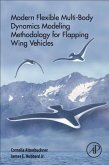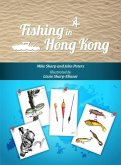The flowfield surrounding wings with a pure flapping motion was studied in quiescent air at a Reynolds number of approximately 200 using particle image velocimetry (PIV) in unusually thin illuminated planes (~0.3 mm). Typical wing semispans were on the order of a few millimeters. The polymer cantilever wings consisting of monodomain liquid crystal polymers made from azobenzene (azo-LCN) were flapped at 30 Hz at a large amplitude (170°). Chordwise and spanwise planar slices of the flow across the wings were obtained and used to estimate the unsteady aerodynamic forces generated by the flapping wings. This study focuses on the flapping flight of small-scale wings in order to visualize the flowfield characteristics. The small-scale wings were, indeed, able to induce the surrounding flowfield and generate aerodynamic contribution, which was clearly observed in spanwise plane. Images at various spanwise and chordwise locations were acquired and processed. In terms of results, the spanwise flow was the dominant.








